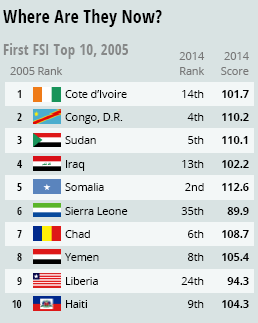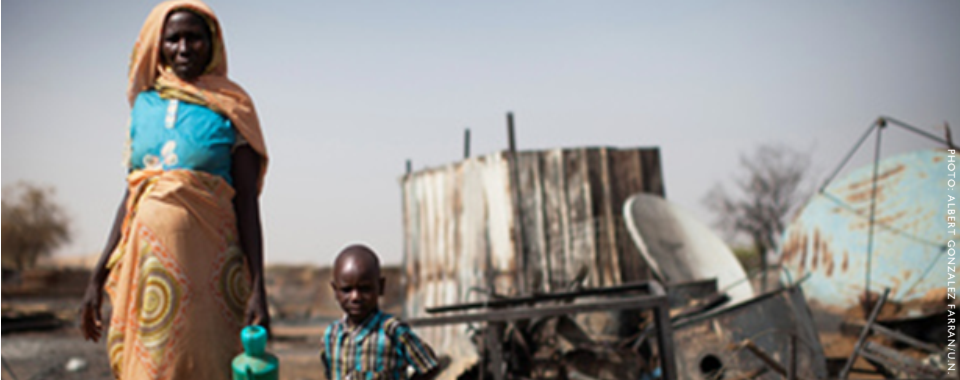BY J.J. MESSNER
 Now with ten years of data from the Fragile States Index (FSI), we have the opportunity to look back on a decade of trends. Though it is useful and informative to view countries’ performances in a given year, it really is just a snapshot in time. Viewing short term trends from year-to-year does add some color to that analysis, but it still does not allow for the slow pace of change that development often entails.
Now with ten years of data from the Fragile States Index (FSI), we have the opportunity to look back on a decade of trends. Though it is useful and informative to view countries’ performances in a given year, it really is just a snapshot in time. Viewing short term trends from year-to-year does add some color to that analysis, but it still does not allow for the slow pace of change that development often entails.
The list of most-worsened countries of the past decade provides few surprises: Libya, for example, is the most-worsened country after enduring a civil war and subsequent instability. Of the top ten most-worsened of the past decade, seven are countries in the Top 50 of the 2014 FSI (with two others ranking not much better, at 62nd and 78th; Greece stood as the only Western nation in this grouping, at 10th-most worsened). But while it is important to be mindful of these negative trends, the list of most improved provides an illuminating insight into the steady development and improvement of various countries, the progress of which has been, to a large extent, undetected.
Take the Balkans, for example. After years of conflict following the break-up of the former Yugoslavia, four of those former constituent states are among the ten-most improved countries of the past decade. Similarly, of the 15 former constituent states of the Soviet Union, all but one has improved over the past decade, and ten of them are among the 30 most improved countries. Though, in fairness, that perhaps says more about their starting point in the economic and political system from which they emerged.
When viewing the FSI for a single year, it is easy to look at the Index and see a very simple division between poorer countries at the top and rich world countries at the stable end. And although that is true — for now — it does not take into account the nuance of gradual change. Sure, there are plenty of developing countries at the top of the FSI, but many of those same countries are those that are the most-improved of the past decade. Things are bad, but in many cases, they are getting better. Meanwhile, at the other end of the Index, 20 of the world’s 30 richest countries (based on per capita GDP) either worsened or stagnated over the past decade.
Although there is plenty to be optimistic about in viewing the decade-long trends of the FSI, there are some warnings that should be heeded. Many of us would expect that the likes of Libya, Central African Republic, and Syria would rate among the most worsened. But also among that grouping are what are generally accepted as the greatest hopes of the developing world: Ghana, Kenya, and South Africa. Frequently seen as the pillars of a new, emergent Africa, those countries are respectively the 14th, 13th, and 11th most-worsened countries of the past decade, giving significant warning of the mounting (and perhaps less detected) pressures that are building on those nations. Across the Atlantic, Chile, often regarded as one of the drivers of Latin American development, is the 15th-most worsened country of the past decade.
There is still plenty to be optimistic about, but the FSI’s trends should serve as a warning — identify the pressures and address them through public policy and development actions before they get out of hand.
